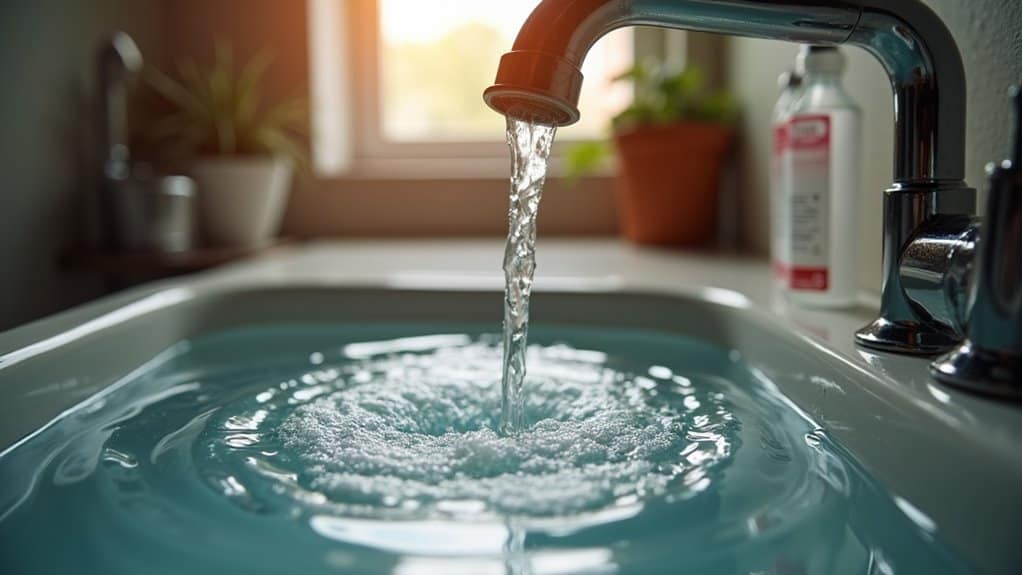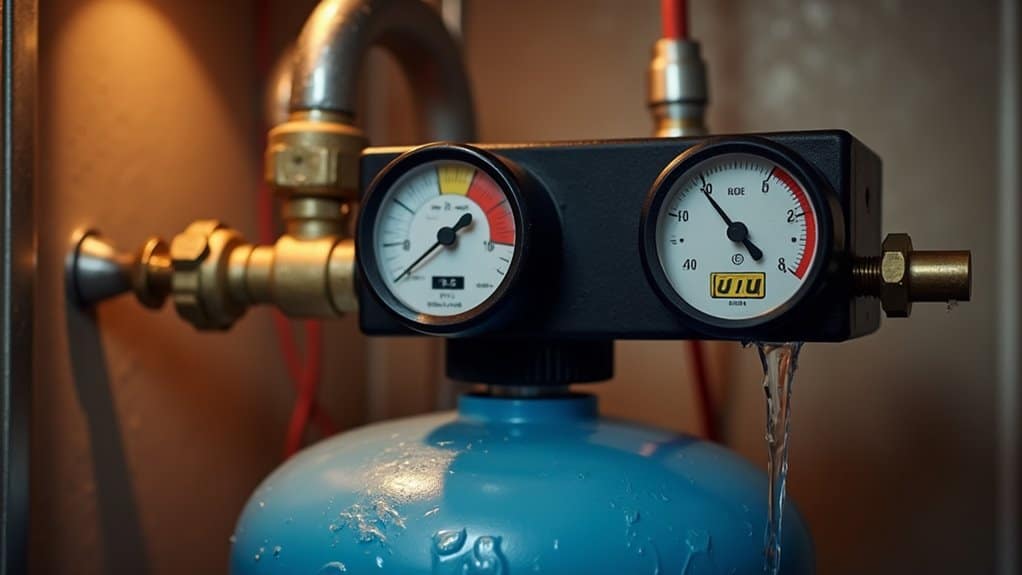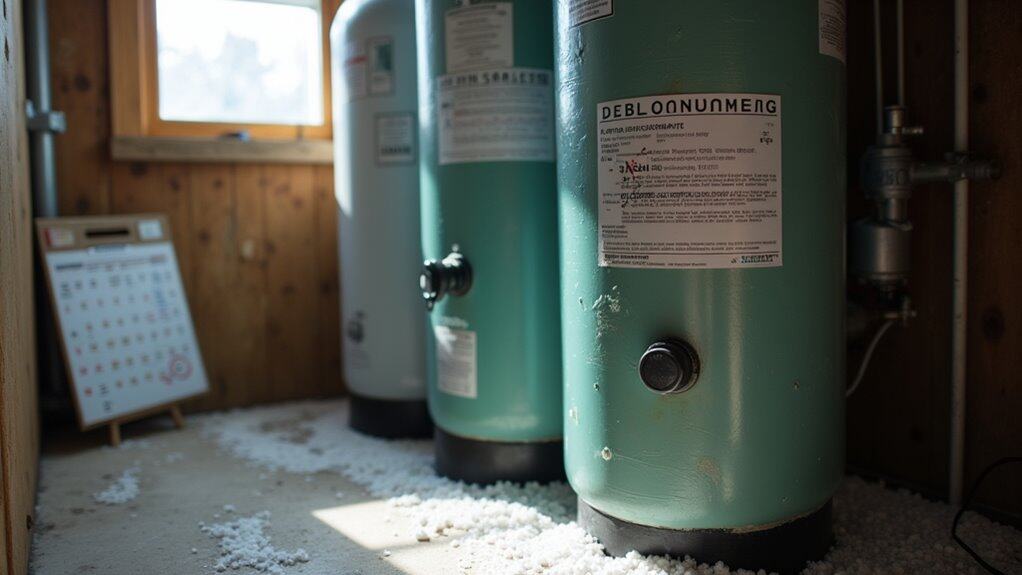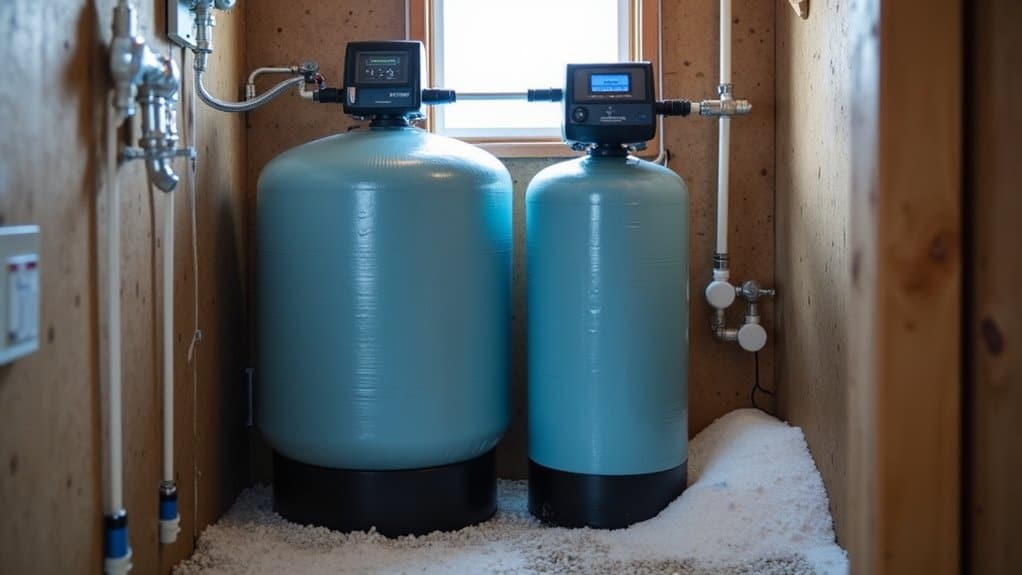Most plumbers sell incorrectly sized water softeners because they overlook your home’s unique hardness profile, miscalculate peak flow requirements, and rely on outdated water usage estimates. They often focus on grain capacity while ignoring the distinction between temporary and permanent hardness, leading to inefficient regeneration cycles and potential system failures. We’ll explore how proper sizing balances capacity with real-world performance and why consulting local water experts prevents these common mistakes.
Key Takeaways
- Plumbers often focus on household size rather than your specific water hardness profile, leading to inefficient systems.
- Most installations miscalculate peak flow rates, causing pressure drops and hard water breakthrough during high-demand periods.
- Water softeners are frequently sized using outdated or average consumption data, not reflecting your actual household usage patterns.
- Improper balance between capacity and regeneration frequency wastes salt or risks resin fouling and system degradation.
- Many plumbers lack specialized water treatment expertise to properly test hardness levels and select appropriately sized equipment.
The Hidden Cost of Ignoring Your Water’s Unique Hardness Profile

While many homeowners focus primarily on water softener size or salt efficiency, understanding your water’s unique hardness profile remains the most critical factor for proper system selection.
We’ve seen countless systems fail prematurely because installers didn’t differentiate between temporary and permanent hardness. Misunderstanding this distinction can lead to increased regeneration cycles that strain the system.
Temporary hardness (calcium bicarbonate) precipitates when heated, while permanent hardness (calcium sulfate/chloride) requires ion-exchange removal. This distinction matters significantly.
When systems are sized only for part of your water’s hardness profile, they regenerate excessively during high-demand periods.
Most warranties specifically exclude failures related to temporary hardness precipitation—leaving you unprotected against the most common cause of system breakdown.
Properly testing your water’s hardness level using instrumental analysis will provide the accurate molar concentrations needed to select the right system.
Flow Rate Miscalculations That Lead to System Failure

How often do homeowners discover their water softener’s inability to handle peak demand only after installation? Too frequently.
Most sizing failures stem from oversimplified flow rate calculations that ignore simultaneous fixture usage. When multiple showers, toilets, and appliances run concurrently, undersized systems can’t keep pace, resulting in pressure drops and hard water breakthrough. Water softener sizing charts can often mislead consumers by not accounting for this critical factor.
Equally problematic are systems mismatched to your plumbing diameter—a 1″ line requires different capacity than 3/4″ pipes. Low-flow conditions create channeling risks where water bypasses resin beds entirely. A properly designed system should include a bypass valve that allows for maintenance without interrupting water service to the home.
Without accounting for both peak demand scenarios and minimum flow requirements, even expensive softeners will underperform when you need them most.
Why “Average” Water Usage Estimates Doom Your Softener From Day One

The flow rate miscalculations that plague system performance represent only one dimension of sizing failures.
We’ve observed that “average” water usage estimates simply don’t reflect reality. COVID-19 shifted consumption patterns by 11% for many households, while temporary migrations of high-income families distort baseline assumptions. A reliable sizing approach can enhance optimal performance and ensure that your system meets your household’s unique demands.
The 130 gpm maximum demand metric fails to capture critical daily usage variations.
Spatial classification differences (low to high consumption zones) and seasonal peaks (particularly May-July) further invalidate one-size-fits-all approaches.
According to a 2023 study conducted under editorial responsibility of Samareh Mirkia, pandemic-related changes in daily routines significantly altered household water consumption trends.
These fluctuations mean your softener might regenerate too frequently or insufficiently based on actual household patterns rather than misleading averages.
The Delicate Balance Between Capacity, Regeneration and Actual Performance

Finding the right balance between system capacity and regeneration frequency represents the core challenge in water softener sizing. We must consider both daily grain load calculations and peak demand requirements simultaneously.
- A properly sized system regenerates every 5-7 days—more frequent cycles waste salt, while longer intervals risk resin fouling. Correct sizing can lead to significant cost savings by optimizing the regeneration process.
- Flow rate capacity (GPM) must match household peak usage, not just average consumption.
- Converting iron/manganese (1 ppm = 4 GPG) into your hardness calculation prevents undersizing.
- Oversized systems develop channeling pathways where water bypasses treatment during low-flow periods. Consulting with local water experts can help determine the correct size based on your specific household conditions and water quality needs.
Frequently Asked Questions
How Can I Test My Water’s Manganese Levels at Home?
We recommend using EPA-certified home test kits to accurately screen manganese levels. We’ll collect water samples according to instructions and send them to state-approved labs for professional analysis.
Can I Install a Pre-Filter to Extend My Softener’s Lifespan?
Yes, we recommend installing a sediment pre-filter. It’ll protect your resin from fouling, prevent valve damage, and significantly extend your softener’s lifespan by blocking particulates, chlorine, and heavy metals.
Does Soft Water Affect My Septic System Differently?
We’ve found that properly configured softeners benefit septic systems by enhancing bacterial activity and reducing chemical disruption. However, excessive sodium or hydraulic overloads from improper maintenance can damage septic functionality.
Will Upgrading My Plumbing Increase My Softener’s Efficiency?
We can improve softener efficiency by upgrading plumbing with larger pipes, low-pressure-loss components, and eliminating bottlenecks. These modifications optimize flow rates, allowing your softener to function at peak performance levels.
Do Water-Efficient Appliances Require Different Softener Sizing Calculations?
Yes, we need to recalculate softener sizing with water-efficient appliances. Your reduced daily volume changes capacity requirements, though hardness levels remain the primary determinant in proper system sizing calculations.
Conclusion
We’ve demonstrated how undersized water softeners fail prematurely while oversized units waste salt and water. By calculating your specific hardness level (in grains per gallon), measuring actual peak flow rates, and analyzing your household’s true consumption patterns, you’ll identify the optimal system capacity. Don’t trust standardized recommendations—your water’s unique chemistry demands precision sizing that balances regeneration frequency with resin capacity and service lifespan.

Craig “The Water Guy” Phillips is the founder of Quality Water Treatment (QWT) and creator of SoftPro Water Systems.
With over 30 years of experience, Craig has transformed the water treatment industry through his commitment to honest solutions, innovative technology, and customer education.
Known for rejecting high-pressure sales tactics in favor of a consultative approach, Craig leads a family-owned business that serves thousands of households nationwide.
Craig continues to drive innovation in water treatment while maintaining his mission of “transforming water for the betterment of humanity” through transparent pricing, comprehensive customer support, and genuine expertise.
When not developing new water treatment solutions, Craig creates educational content to help homeowners make informed decisions about their water quality.


